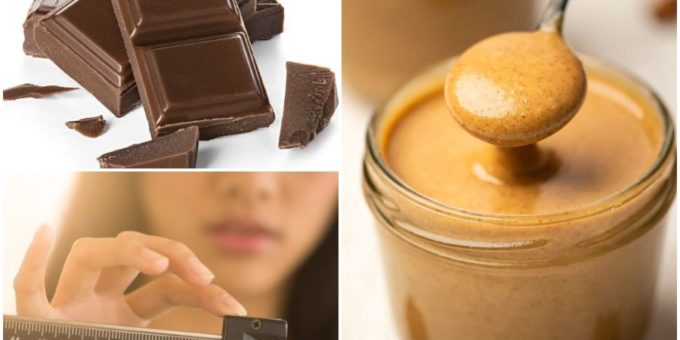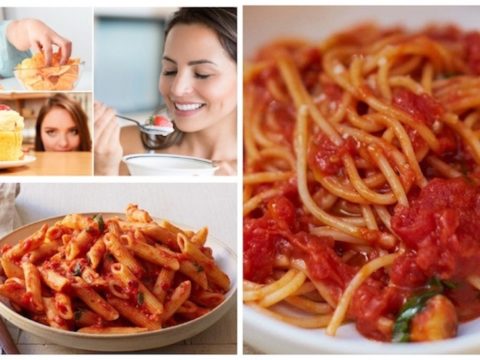
We would be debunking the biggest myth going around in the world of weight loss right now – that eating fat makes you fat! Faulty research with unsubstantiated claims have made “fats” a villain and the main factor that causes heart problems and make you gain weight. Due to all these reasons, large chunk of population is avoiding all forms of fats like a plague. In fact, it’s a popular myth that if you want to lose weight, you should cut out “fat” completely from the diet or at least go “low fat.” Also, the same kind of faulty research has promoted vegetable oils as a better alternative to healthy fats. But, in reality, eating fat does not make you obese, in fact, the right kind of “fats” can make you thin. It all depends on what category of this macronutrient you are including in your diet and how much of it are you consuming on a daily basis. Those fatty foods that you have long avoided to avoid weight gain can actually make you thin. Believe it or not, fat is an essential part of healthy diet, and if you have been avoiding it based on popular myth, it’s the right time to make a turn. On the contrary, if you have to cut anything out completely, do cut back on sugar. You can find that Rati Beauty weight loss programs uses healthy fats quite a lot in their diet programs to achieve weight loss.
Why We Need Fat on a Daily Basis?
Just like carbs and protein, fat is also an essential macronutrient, needed in a percentage of 20% to 35% of daily calories. In fact, all body cells have fat content and our brain is made of 60% fat. It is needed to relay signals through the body and in production of hormones. Our body switches to fat as an alternative source of energy when carbs run low. Fat also maintains the core temperature and keeps the body warm. Fat is absolutely necessary for the absorption of vitamins such as A, D, and E because these are fat-soluble vitamins. Fats such as omega-3 fatty acids strengthen the heart and reduces inflammation in the body. Looking at all these benefits, it’s not really justified for giving a bad rap to this macronutrient for health issues.
How Eating Fat Makes you Slim?
1. Each molecule of fat provides 9 calories per gram, whereas protein and carbs provide 4 calories each, so fat can keep you full for longer, reduce cravings and frequent snacking. But fat can quickly increase the calorie count, so one has to be careful not to go overboard.
2. Fat does not cause insulin spikes and “insulin” is a hormone that also triggers fat storage. When there is too much insulin in the blood stream, there are more chances of it getting stored as fat. Healthy fats do not trigger the release of excess insulin, slowing down the process of fat storage.
3. Healthy fats boost metabolism instead of making it sluggish.
4. Fats also help balance out important hormones.
5. Healthy fats are absolutely necessary for the absorption of fat-soluble vitamins like A, D, E which are necessary in the fat-burning process.
6. They stimulate lipolysis.
7. Reduces inflammation in the body (omega-3 fatty acids).
8. Healthy fats regulate hunger hormones.
9. Since the brain is made of 60% fat, lack of healthy fats can cause in malfunctioning of brain signals and may lead to stress, anxiety, and even depression.
10. Prevents leptin resistance. Leptin is the “satiety” hormone which tells the body to stop eating when necessary energy is achieved through food. But with the rise in insulin levels and lack of adequate healthy fat, insulin tends to interfere with leptin’s performance, and as a result, you tend to eat more calories than required.
Summing up, bad carbs make you fat whereas healthy fats burn fat. American Heart Association recommends keeping good fat percentage to about 30% in your diet with a good balance of monosaturated, polysaturated, and not to forget, omega-3 fatty acids. In a 2000-calorie diet, 20 grams of saturated fat per day is recommended.
Good Fats vs Bad Fats:
Different Types of Fat:
1. HDL/Good Cholesterol (High-Density Lipoprotein): HDL cholesterol lowers your risk of heart disease and stroke because it cleans and clears up extra cholesterol from the bloodstream and carry it to the liver, where it eventually gets disposed out of the body. This is precisely why HDL is considered “good cholesterol” and a good HDL level would protect you against heart attack and stroke. If the HDL levels are high, it’s extremely good for your heart and health.

2. LDL/Bad Cholesterol (Low-Density Lipoprotein): LDL cholesterol gets deposited within the walls of the blood vessels and obstruct the normal flow of blood through arteries. This narrowing of arteries raises one’s risk of developing heart attack and stroke. This is the reason why LDL cholesterol is called “bad” cholesterol. High LDL level is a threat to your health and medications and timely intervention is warranted in such a case.
3. Triglycerides: Triglycerides are made of three molecules of fatty acid and one glycerol molecule. High triglyceride levels can cause cardiovascular disease, pancreatitis, and even stroke. Vegetable oils, animal fat, and fatty foods can cause triglycerides to shoot up. High triglyceride levels also cause inflammation and high blood pressure.
4. Transfat: Transfat is artificially made from vegetable oils by a process called hydrogenation where hydrogen molecules are added to the oil. This is done to increase the shelf life of the oil, to solidy the oil, and make it more appetizing and suitable for frying. Also, transfat is an inexpensive way to add taste to the oil, but this process is extremely harmful to the human body due to the high proportion of LDL (bad cholesterol) which can wreak havoc in the body and puts one at the risk of developing morbid diseases like type 2 diabetes, stroke, and heart disease. Transfat food is commonly found in fried food, packaged baked items, even margarine.
5. Saturated Fat: These kind of fats are solid at temperature and can raise cholesterol levels.
6. Monosaturated Fat: Good fats, should be taken in moderation. They are liquid at room temperature and solidify at room temperature.
7. Polysaturated Fats: Best taken in moderation, helps to lower cholesterol. Consuming foods high in omega-3 fatty acids is associated with a decreased risk for certain health conditions, such as cardiovascular disease and certain types of cancer. They are liquid at room temperature and solid at cold temperatures.
Fats that are Good:
Monosaturated, polysaturated, and omega-3 fatty acids.
Fats that are Bad:
Saturated fats, trans fats and added sugars.
List of Foods with Healthy Fats that Keep you Thin:
1. Avocados: A rich source of healthy fat, avocados lower inflammation, reduces LDL cholesterol, regulate blood sugar, help burn belly fat, and helps in the fat burning process.
2. Chia Seeds: Considered as a “superfood,” chia seeds are gluten free, does not cause insulin spike, and is a good source of fiber.
3. Coconut oil: This oil is rich in saturated fat and has lauric acid and medium-chain fatty acids (MCTs), that provide increase energy expenditure. The healthy fats in coconut oil also fight belly fat.
4. Butter: The butryic acid content in butter is great for the gut bacteria, but always remember to consume butter in moderation.
5. Ghee/Clarified Butter: The world is turning to “ghee” due to its high omega-3 fatty acids. In fact, the healthy fat content actually helps shrink fat cells, and aids the whole fat-burning process.
6. Omega-3 Fatty Acid Fish (Tuna, Salmon, Mackarel): These fatty fish are provide ample omega-3 fatty acids that are absolutely heart healthy.
7. Olive Oil: The healthiest oil for low-heat cooking, olive oil boosts metabolism, reduces bad cholesterol, and releases adiponectin (a hormone that helps to break down fats). Extra virgin olive oil also increases the level of serotonin (an appetite suppressant).
8. Nuts: Walnuts, macadamia, pistachios are a rich source of healthy fat and just 1 or 2 tbsp are enough to provide enough fiber, protein, and healthy fats.
9. Pumpkin Seeds: Along with fiber, they are also rich in protein and healthy fats, all needed for fat burning.
10. Flaxseed: These seeds have omega-3 fatty acids along with fiber, and also have lignans which are antioxidants.
11. Peanuts: These provide monosaturated fatty acids, help lower cholesterol, but it also has omega-6 fatty acids, so moderation is the key with peanuts.
12. Whole Eggs: Not just the egg whites, include whole eggs in your diet because it’s a rich source of healthy fats and also B6, B12, A, D, E and K, along with being a good source of folate, choline, lutein, calcium, iron, phosphorus, zinc, and healthy fats such as omega-3 fatty acids.
13. Almonds: These contain monosaturated fatty acids, and has trace minerals like magnesium, copper, and also B vitamins and E. If you want to have flawless skin and lose weight as well, just 6 to 7 almond are what you need in a day.
14. Sesame seeds: These seeds regulate blood sugar levels, reduce inflammation, and has a good amount of healthy fats.
15. Hemp Seeds: A lesser-known food source of fats, it boosts weight loss and improves muscle mass.
16. Dark Chocolate: When there’s no added sugar, dark chocolate is great for weight loss because it has a good amount of antioxidants and healthy fats.
17. Milk: If you are not lactose intolerant, milk can be considered a good source of fat along with calcium.
Which Milk Type is Best For Weight Loss
How To Consume Chia Seeds For Weight Loss














